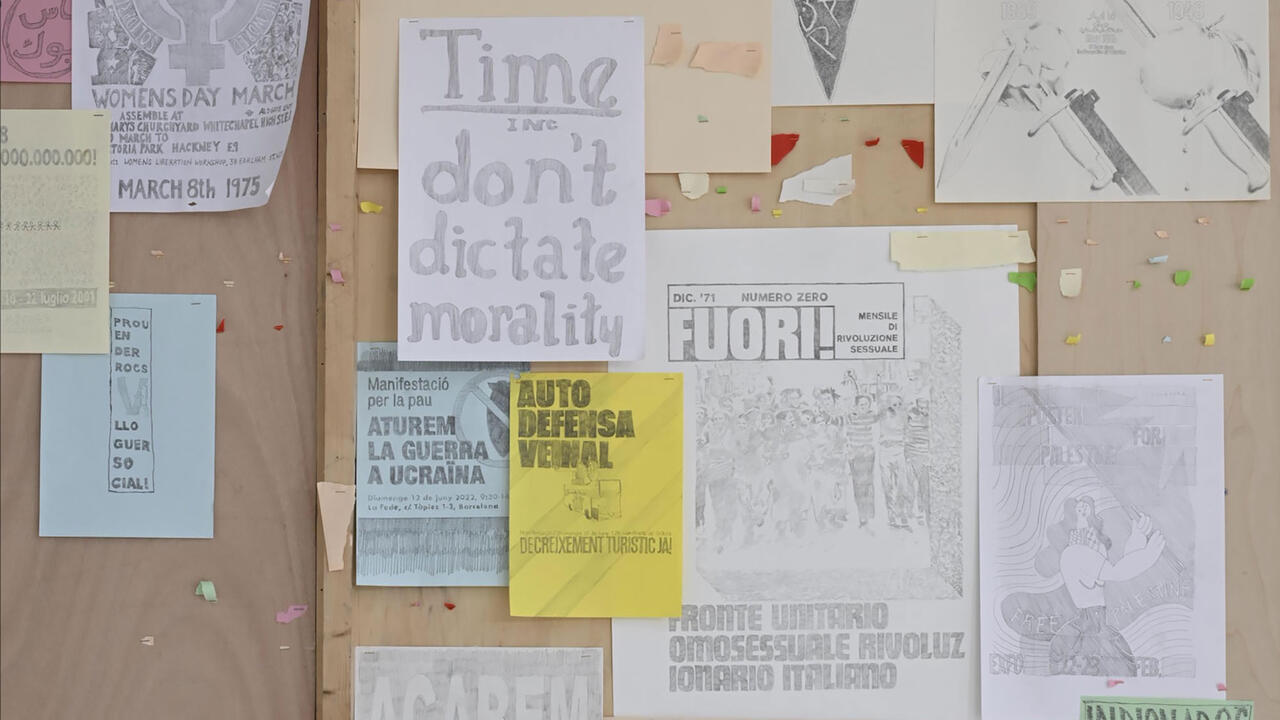‘The Molecular Turn’: While Social Media Flourishes Ecological Systems are Collapsing
At La Panacée, Montpellier, Nicolas Bourriaud’s manifesto for a new movement and attempt to demarcate an artistic peer group
At La Panacée, Montpellier, Nicolas Bourriaud’s manifesto for a new movement and attempt to demarcate an artistic peer group

Opened in 2013 and with Nicolas Bourriaud at the helm since 2015, La Panacée is an enviable exhibition space and residency facility under the umbrella of Montpellier Contemporain (MoCo) that incorporates the city's fine art school and soon another 3,500-square-metre venue. Bourriaud is best known for his theory of relational aesthetics, under whose banner he diagnosed a participatory zeitgeist in 1990s art through an influential eponymous 1998 book and exhibitions including 'Traffic' (1996). Similarly, 'Crash Test: The Molecular Turn' is a manifesto to name a new movement for the art of the 2010s, and to demarcate an artistic peer group – the vast majority of the 25 young artists in the exhibition were born in the mid-1980s and are based in Paris, Berlin or New York.

Bourriaud draws on Félix Guattari, Bruno Latour, Michel Serres and other thinkers to contend that a 'molecular art' has emerged from our postinternet times in which – as artist Thiago Rocha Pitta observed at the exhibition opening – ecological systems are collapsing while social media is flourishing. Much like Roger Hiorns's pulverized jet engine (Untitled, 2008), overarching theories and distinctions between nature and culture, online and offline, have become irrevocably ground down. Bourriaud also contends that representation, objecthood and humanism are obsolete strategies for legitimate and effective art. Artists who tap into chemical pathways, atomic forces, alloys, synthetics and prosthetics now define a novel and more durable way of dealing with material reality. It is perhaps evidence of a critical ploy rather than a snub to note that many of the works in the exhibition employ a remarkably consistent visual rhetoric that is well-suited to Instagram. Whether the red sponges of Phillip Zach (Seeing Red II, 2017), the tar-like puddles of Marlie Mul ('Puddle', 2014) or the Play-Doh-coloured crystal forms produced by Agnieszka Kurant and her termite collaborators ('A.A.I.', 2017), molecular art often suggests the vibrant powders, soils, gels and foams of molecular gastronomy.
Apart from three video-based contributions and one that draws on photography (lenticular composites by Estrid Lutz and Emile Mold), the vast majority of works on view could be described as constructed sculpture, or abstract painting by any other name. The incorporation of chemical and pharmaceutical components in some of the works is evidently a molecular art trait. Four large, pink monochrome panels by Pamela Rosenkranz, 'Untitled' (2018), were made under the influence of pills for erectile dysfunction. Mounted high on the wall, Juliette Bonneviot's Deep Grey Xenoestrogens (2016) is one of three works made from a synthetic soup – invisibly spiked with the hormone-disrupting compounds that are secreted by all manner of plastics, cosmetics and insecticides - that hardened into otherwise unremarkable forms, like giant crumpled chicharrones.

A biomechanical science-fiction aesthetic is a further trope. As if a botched alien from the mind of H.R. Giger, Ivana Bašić's Untitled (2018) imagines a humanoid body with a glass cocoon plumbed into its spine and spindly legs braced with metal. Meanwhile Dora Budor's A woman passing on the street said, 'a decongestant, an antihistamine, a cough suppressant, a pain reliever' (2016) is a kind of grotesque technofossil relief incorporating the fictitious gynaecological instruments from David Cronenberg's film Dead Ringers (1988).
It comes as no surprise that 'Crash Test' evokes the buzzword Anthropocene. T.J. Demos, Jean-Baptiste Fressoz and others have recently warned of the perils of naming this proposed geological era. Environmental catastrophe is irrefutable. Yet the Anthropocene narrative declares that all humans are to blame, that it was somehow inevitable, and that waking up to it comprises a recent development and a new theory. 'Crash Test' is a bold and accessible exhibition that includes some compelling contributions, not least by Alisa Baremboym, Aude Pariset (showing four panels that had been gnawed at by caterpillars with the ability to digest plastic), Alice Channer, Sam Lewitt and Bianca Bondi (sorrowful glass vitrines that harbour lichens, crystals, copper books, medical flasks, and Kangaroo Paw flowers). Yet, its insistence that the material effects it names in current 'plastic arts' are new and without precedent is also troublesome. From the notion of formlessness introduced by Georges Bataille in the 1920s, to the collaborations of Experiments in Art and Technology in the 1960s, or Donna Haraway's cyborg manifesto of the 1980s, the generosity of 'molecular art' is surely just how many demographic cohorts it potentially crosses, and how many precedents it enjoys, rather than how few.
Main image: Virginia Lee Montgomery, Deep See, 2016, HD video still. Courtesy: the artist






















